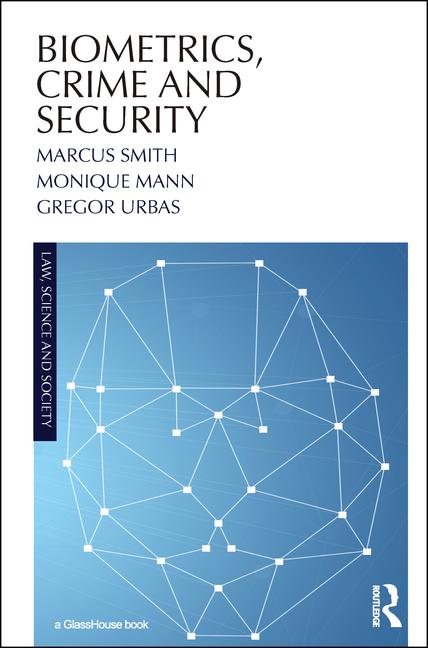The New Science of Criminal Apprehension and Prevention

According to FBI crime statistics released in September of 2017, crime increased in the U.S. for the second consecutive year – posting a 4.1-percent surge last year compared to previous figures. FBI Director Christopher Wray called for the country to “get beyond anecdotal evidence and collect more comprehensive data so that we have a clearer and more complete picture of crime in the United States.” He continued, “The more complete the data, the better we can inform, educate and strengthen all of our communities.”
There’s no doubt that there is more video surveillance data in existence today than ever before and camera installations are on the rise. According to a recent industry report published by Scalar Market Research, the global physical security market is expected to grow from $71.59 billion in 2016 to approximately $158.79 billion by 2022. The more cameras there are in businesses and municipalities monitoring and recording activities, the greater the chances of apprehending and prosecuting criminals.
But the vast amount of video surveillance footage available is taxing security and law enforcement officials as the information collected requires viewing and investigation to determine identities. Ninety percent of the time, law enforcement officials do not have the time to identify the criminals captured on video as they dedicate their time to the most serious offenses. And while getting the video in front of a large audience is helpful, the chances of having a video of any one crime, such as retail robbery or theft broadcast on the local news, are slim given the vast number of cases reported every day.
However, there is a new science of crime solving and prevention that dramatically improves how new video surveillance technologies are applied to identify and apprehend criminals – and reduce crime. Captis Intelligence’s Criminal Apprehension and Prevention platform provides a cloud-based solution that employs crowdsourcing and advanced analytics to effectively help identify and apprehend suspects and deter future incidents from occurring.
The platform is built on four primary application pillars: Intelligence, Information, Identification and Investigation.
Intelligence includes an interactive map of crime in the member’s area that’s updated daily with Actionable Crime Tracking (ACT), and provides alerts based on defined criteria such as location radius, type of crime, warnings and pictures/videos of criminal events and more.
Information is built on a secured information exchange forum with other users’ businesses and a portal to share information or make inquiries directly to the police, which can be done via anonymous messaging.
Identification is accomplished with facial recognition analytics from captured video by users’ private and/or public/municipal surveillance systems to find matches of known criminals using Captis’ database of more than 15 million criminals. When a match is made, the suspect’s identity and dossier, including criminal record are provided to the user. If no match was made, the suspect’s image can be posted to Captis Intelligence’s Solveacrime.com crowdsourcing website (which is free for the public to view) to broadcast suspect and crime information via social media and other crowdsourcing conduits. Solveacrime.com followers can then enter anonymous tips which are sent to law enforcement officials for investigation.
Investigation is facilitated using the “Suspect Search” feature, which is utilized when there is no image of the suspect or the image is not clear enough to use with facial analytics. Instead, members can enter specific search criteria such as location, age, race, height, weight, scars, tattoos, etc., which is compared against Captis Intelligence’s databases of mugshots, terrorists, organized crime members, international criminals, sex offenders, wanted criminals and missing persons. The platform then produces a list of the closest matches along with a dossier and picture of each match. These databases have been compiled over several years, and are believed to be the world’s largest source of criminal data outside of government agencies. PRISM (Protective Research & Investigation in Social Media) is another investigation tool in the Captis I-4. It can scan all social media anywhere in the world including the Deep Web for specific people, terms, phrases, or even networks of targeted individuals and their communications.
The four “I’s” combine to unify and expand situational awareness, collect geographic crime intelligence, conduct social media investigations, poll criminal databases, implement crowdsourcing intelligence gathering, and exchange information with members and law enforcement agencies.
Solveacrime.com plays a critical role in solving crimes by expanding information gathering processes beyond active members and law enforcement agencies to the public. The crowdsourcing process can be broken down into six steps:
- Upload a crime scene video to Solveacrime.com
- Automatic notification to registered users of a criminal activity in a given geographic radius
- Automatic distribution of surveillance video and/or images of the perpetrator to dozens of Captis release conduits including Facebook, Twitter, Instagram, message boards and media outlets
- Members of the public using the App submit anonymous tips on Solveacrime.com and are given a unique tip ID number used for collection of any associated reward
- Tips are delivered to police and the submitter of the crime
- Police apprehend the suspect and a reward is paid to the tipster who provided the tip leading to the arrest
One of Captis Intelligence’s most notable accounts is the pharmacy chain giant, Rite Aid. In the fall of 2017, a man entered a Rite Aid location, jumped over the counter, took cash from the register and then fled before police arrived. A few days later a woman who lives in the area saw a surveillance feed with a familiar looking face on social media. She filled out a tip form on Solveacrime.com, and the subject was apprehended shortly after. -Tips like this solicited through Solveacrime.com have more than doubled Rite Aid’s case-closure rate.
According to Robert Oberosler, VP of Asset Protection at Rite Aid, “We’re now closing more than 50 percent of our violent crimes within a week of using Solveacrime.com. It is one of the most interesting and successful crime resolution tools that I have ever used over my 40 years of experience. Solveacrime.com helps Rite Aid solve more crimes, and provides a powerful deterrent by letting criminals know that Rite Aid is actively using crowdsourcing to identify and help apprehend criminals.”
One of the most surprising results Oberosler cites is the speed with which tips come in via Solveacrime.com. “Law enforcement personnel have been astonished at the overall results, as many cases are solved in a couple of days. In one instance we posted a crime and arrested the perpetrator in about three hours,” says Oberosler.
Captis Intelligence’s powerful Criminal Apprehension and Prevention platform has resulted in a significant change in how Rite Aid conducts criminal investigations and implements crime prevention strategies, according to Oberosler. “Instead of being purely defensive, we are now on the offensive, and the results are impressive. “It’s fun to play offense.”
Looking for a reprint of this article?
From high-res PDFs to custom plaques, order your copy today!








